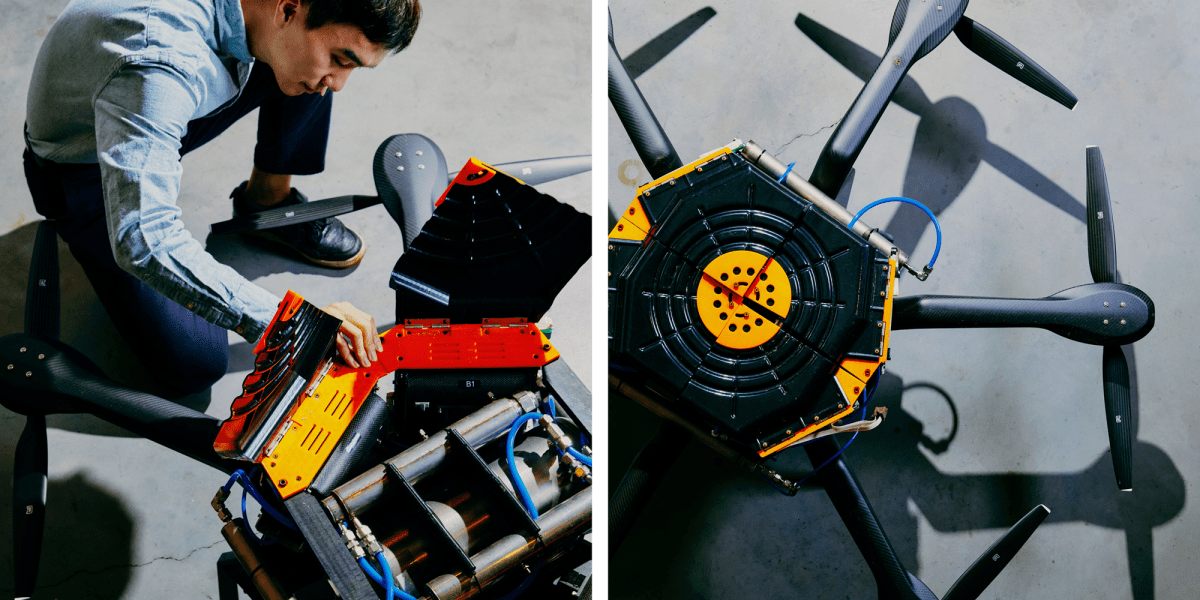Meet the climate innovators of tomorrow
This article is from The Spark, MIT Technology Review’s weekly climate newsletter. To receive it in your inbox every Wednesday, sign up here.
A lot of bright minds are working on solutions to climate change. You can find some of them in the latest edition of our annual 35 Innovators Under 35 list.
We’ve highlighted a lot of bright innovators over the years, usually before they become household names. Sergey Brin of Google was on the list in 2002. JB Straubel was honored in 2008 when he was CTO of Tesla. That year also saw Andrew Ng make the list (he’s one of the biggest names in AI right now, and he came back this year to write an intro essay, which I highly recommend.)
As I looked through the folks who made the list in the climate and energy category in 2023, I noticed a few trends. In particular, there was a concentration in two areas I think a lot about: batteries and fuels. So let’s take a closer look at a few of this year’s innovators and consider what their work could mean for the future of climate action.
Charging up
As you probably know if you’re a frequent reader here, I see batteries as one of the most crucial pieces of technology in the fight to address climate change. Not only are powerful, long-lasting batteries crucial to electrifying vehicles and other forms of transportation, but they are expected to play a growing role on the grid, storing energy from intermittent renewable sources like wind and solar for when it’s most needed.
Batteries have come a long way in recent years, and prices have plummeted. (They just fell to under $100 per kilowatt-hour for the first time in two years, continuing a downward trend that’s lasted for a decade.)
However, there’s huge potential for more progress, especially in battery materials. And two innovators on this year’s list are looking to new materials to help make batteries more useful in more ways.
Tongchao Liu of Argonne National Lab is working on making batteries last longer.
Over time, batteries tend to wear out as they charge and discharge. Liu developed a diagnostic system to determine where that failure takes place and identified part of the battery called the cathode as the major culprit. He and his team then came up with an alternative cathode material based on perovskites. (You may have heard of perovskites in the context of solar cells.) In lab tests, battery lifetimes tripled with the new material.
David Mackanic of Anthro Energy is developing bendy batteries, which could power things like wearable devices as well as EVs.
One of the most crucial parts of a battery is the electrolyte, the material that charge moves through in a cell. Many batteries, including the lithium-ion cells that power EVs and laptops today, use a flammable liquid as an electrolyte. But Mackanic and his team invented a flexible polymer electrolyte, which can bend without compromising battery performance.
It’s not easy to bring new battery inventions to the market, and there’s a long path ahead for both of these projects, but I’ll definitely be watching to see how they turn out.
Fueling up
Another trend I noticed among the innovators this year was a focus on fuels. Like batteries, fuels store energy, but they tend to pack more energy into a smaller space than many batteries can, making them easier to transport. So fuels could be the best solution on the table for industries like aviation and shipping.
Peter Godart of Found Energy has a vision of using aluminum as a fuel. He developed a process to pull apart the metal with water, producing both heat and hydrogen that can be used as energy sources. His startup’s initial plans are to work with aluminum producers to help them use scrap to partially power aluminum recycling.
Stafford Sheehan of Air Company developed a process to convert carbon dioxide into alcohol, which can then be used to make jet fuel. The company has a deal with the US military and hopes to sell its fuel more widely in the next few years.
Young Suk Jo of Amogy wants to power ships using ammonia. The chemical is typically used in fertilizer, but it could also be used as a handy way to store hydrogen, a leading clean fuel. Jo and Amogy invented a reactor that can pull ammonia apart into nitrogen and hydrogen that can be used onboard vehicles. The company has tested its system in a drone, a tractor, and a semi-truck and plans to power a tugboat using ammonia later this year.
You might remember Young Suk Jo from an earlier edition of the newsletter—I spoke with him in June, when I visited Amogy’s headquarters in Brooklyn. I also wrote a longer profile of him that was just published yesterday, which you can read here.
A lot of innovators are working on batteries and fuels, but even these fields are a small piece of climate action overall. There are also folks on the list who are tackling demand response on the grid, satellites for climate monitoring, and materials for carbon capture, not to mention all the people in the biotechnology, AI, robotics, and computing categories. Be sure to check out the full list of 35 Innovators Under 35 to get all the details.
Related Reading
Batteries are complicated. Here’s how a lithium-ion battery really works.
There are all sorts of ways to innovate in battery materials, and some alternative batteries could replace flammable solvent electrolytes with water-based ones.
Alternative jet fuels are often called SAFs, or sustainable aviation fuels. Here’s everything you need to know about them.
Another thing
When it comes to minerals that are used for key climate technologies like batteries, solar, and electrolyzers, China seems to be at the center of it all. But what are China’s policies around critical minerals? Does the country want to build a self-sufficient clean-tech supply chain?
Find the answers to those questions and more in my colleague Zeyi Yang’s latest story, where he sat down for a chat with Seaver Wang, co-director of the climate group at the Breakthrough Institute.
Keeping up with climate
At Apple’s annual event yesterday, climate promises took center stage. There was even a lengthy skit featuring Octavia Spencer as Mother Nature. I found the whole thing equal parts cute and cringe, personally.
→ The company announced that its new watches would be “carbon neutral” products. Focusing on the watch can distract from the bigger moves needed to cut Apple’s climate impact. (The Verge)
→ The company is using some offsets to cut its net emissions. While that particular strategy is often junk, Apple’s climate efforts aren’t entirely BS. (Heatmap News)
→ For example, I’m interested in the efforts to use recycled materials, including recycled cobalt, in batteries. (MIT Technology Review)
Thermal battery startup Antora just flipped on its first commercial-scale system. The company’s technology could help power industrial plants that require high heat and constant power. (Bloomberg)
→ Here’s why thermal batteries are the hottest (get it?) new climate technology. (MIT Technology Review)
Even for a high-ranking government official, EV road trips still present some challenges. On a trip this summer, the US secretary of energy and her entourage ran into problems when multiple EVs tried to stop at a fast-charging station outside Augusta, Georgia. (NPR)
Should cow poop make hydrogen clean? The fight over a new hydrogen tax credit is raging on, with new concerns surfacing that shoddy accounting will make the credit worthless in cutting emissions if “renewable natural gas” projects are included. (Canary Media)
If the world were getting graded on climate change progress, we probably wouldn’t be passing. The UN released a climate “report card,” and while there’s been some action, things need to speed up soon to meet international climate goals. (The Verge)
There’s lots of big news in steel this week. H2 Green Steel raised $1.6 billion in equity to help build its planned green steel plant in Sweden. (Canary Media) And Boston Metal, a startup working to electrify production of one of the world’s most used and most polluting materials, raised a $262 million funding round. (Bloomberg)
New research could help cut down on contrails (the condensation trails that form behind planes as they fly), which make up a significant chunk of aviation’s climate impacts. The key is avoiding certain parts of the atmosphere where long-lasting clouds form. (Quartz)
Batteries on the grid could help smooth out the electricity supply from wind and solar, and also provide backup in the case of blackouts. But some people are understandably nervous about the potential fire safety issues that large battery installations could present. (Wired)




